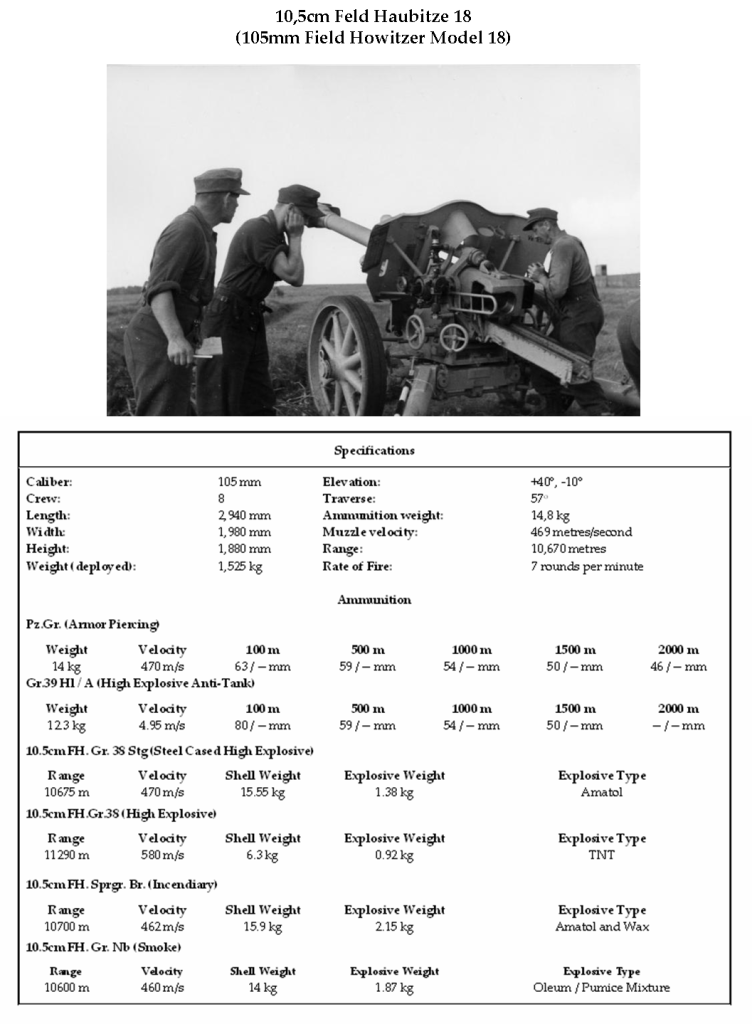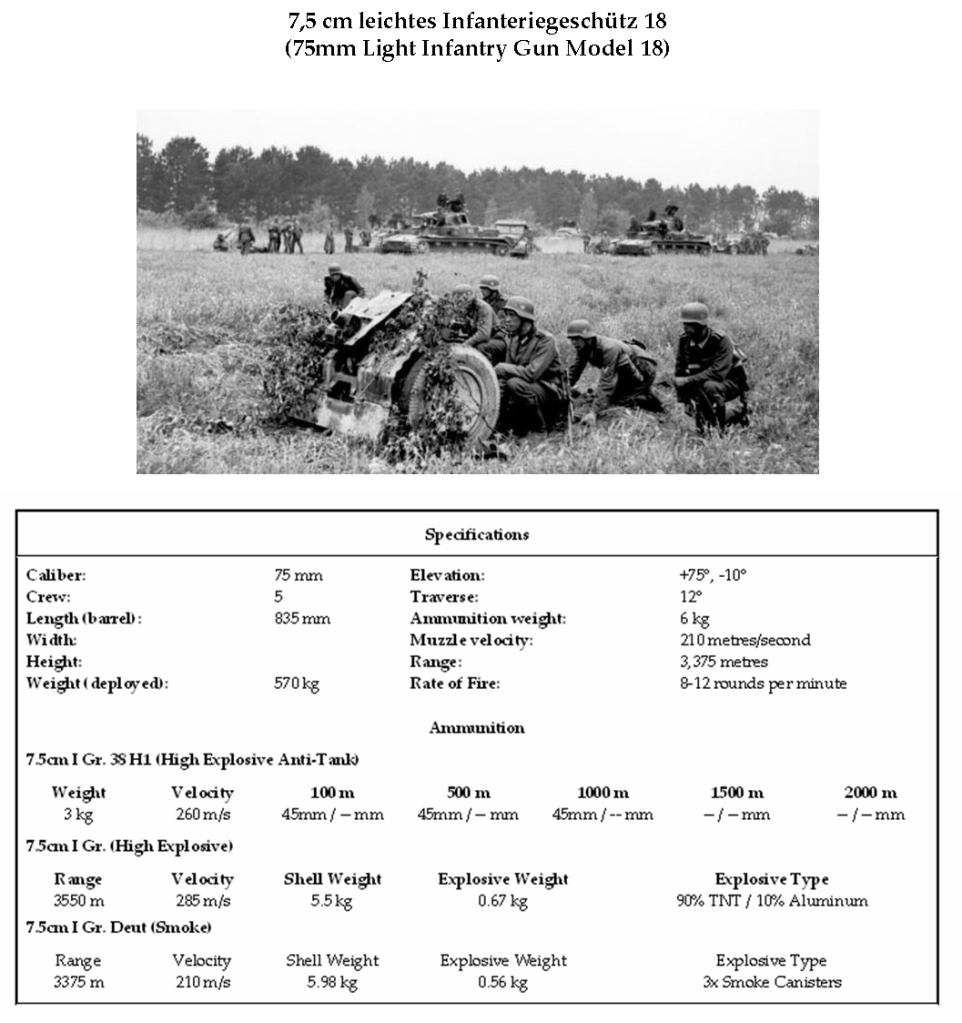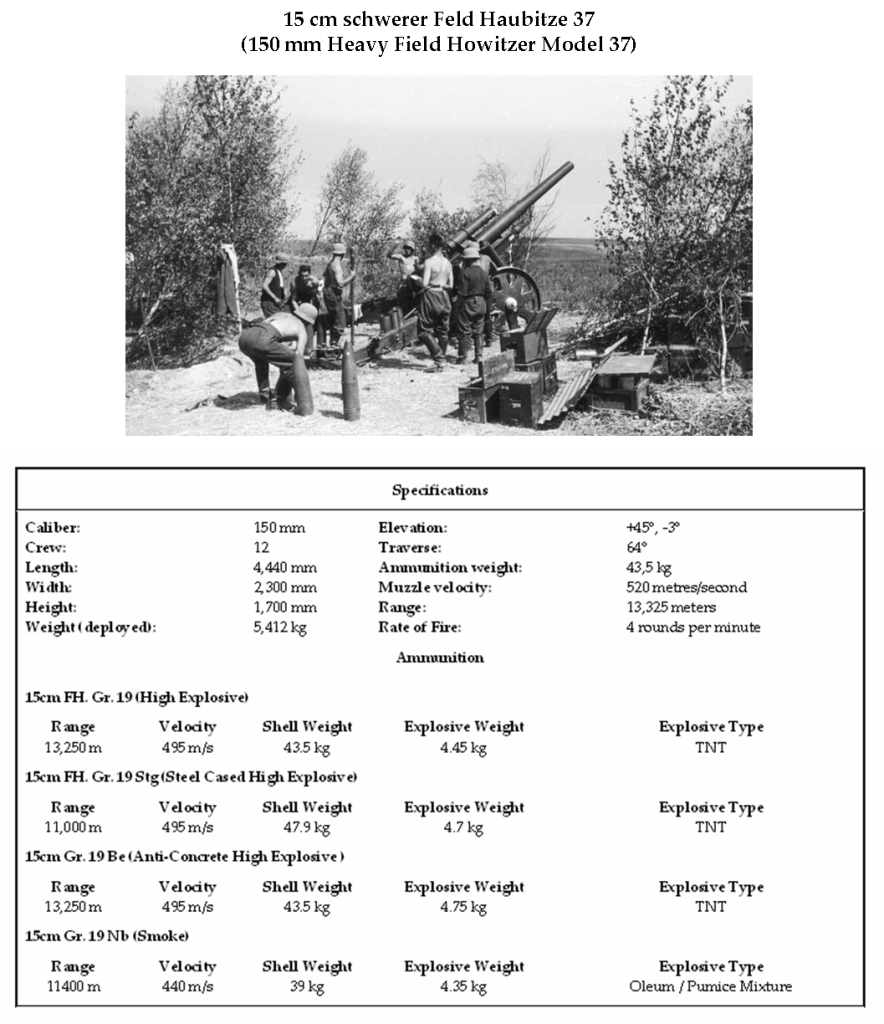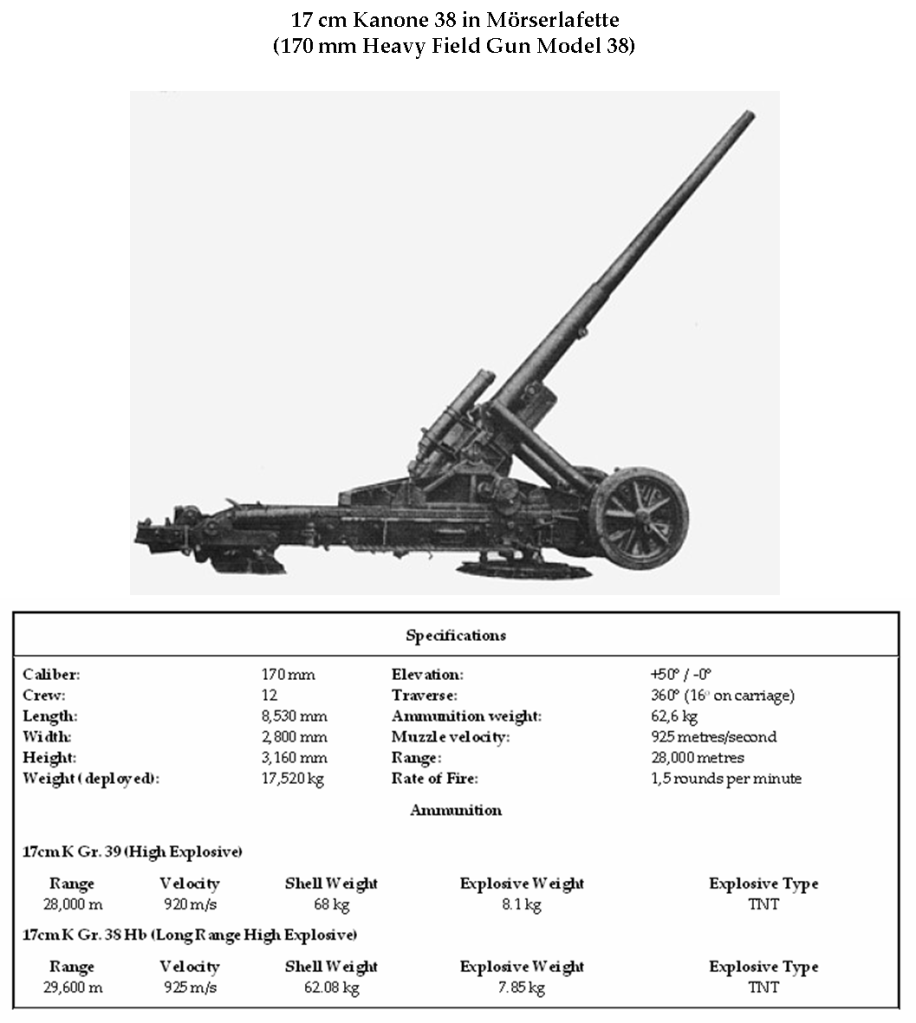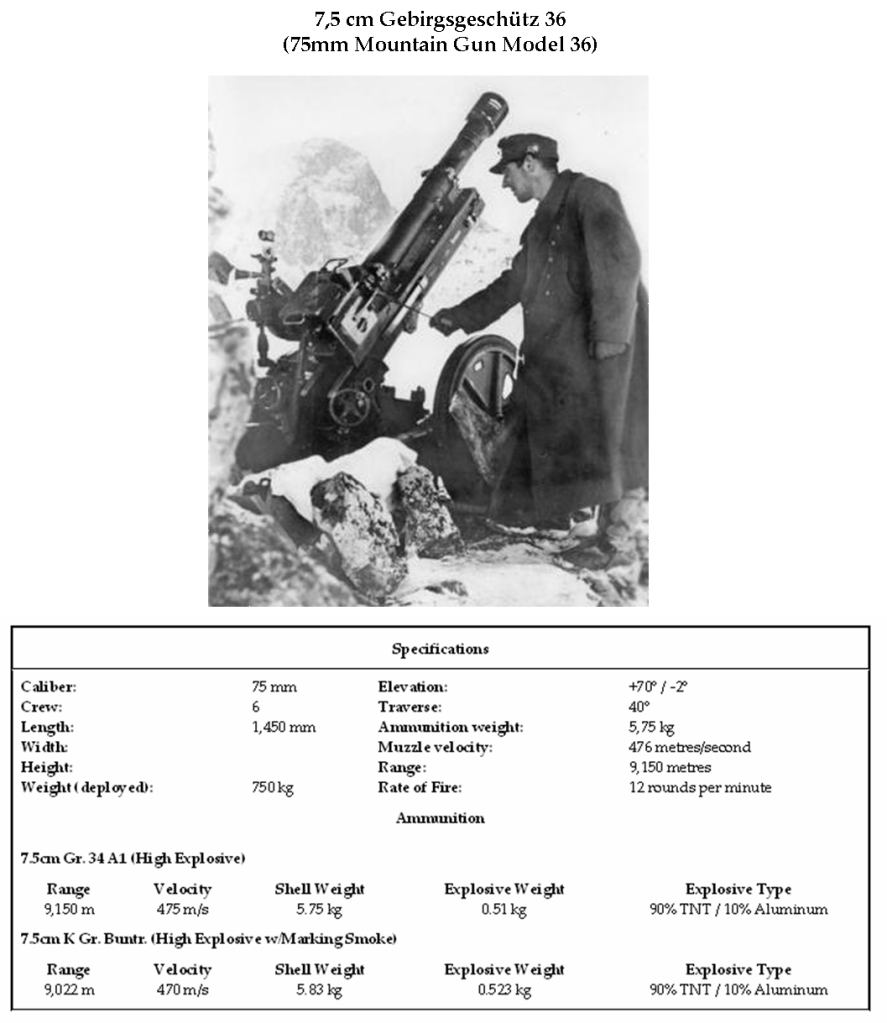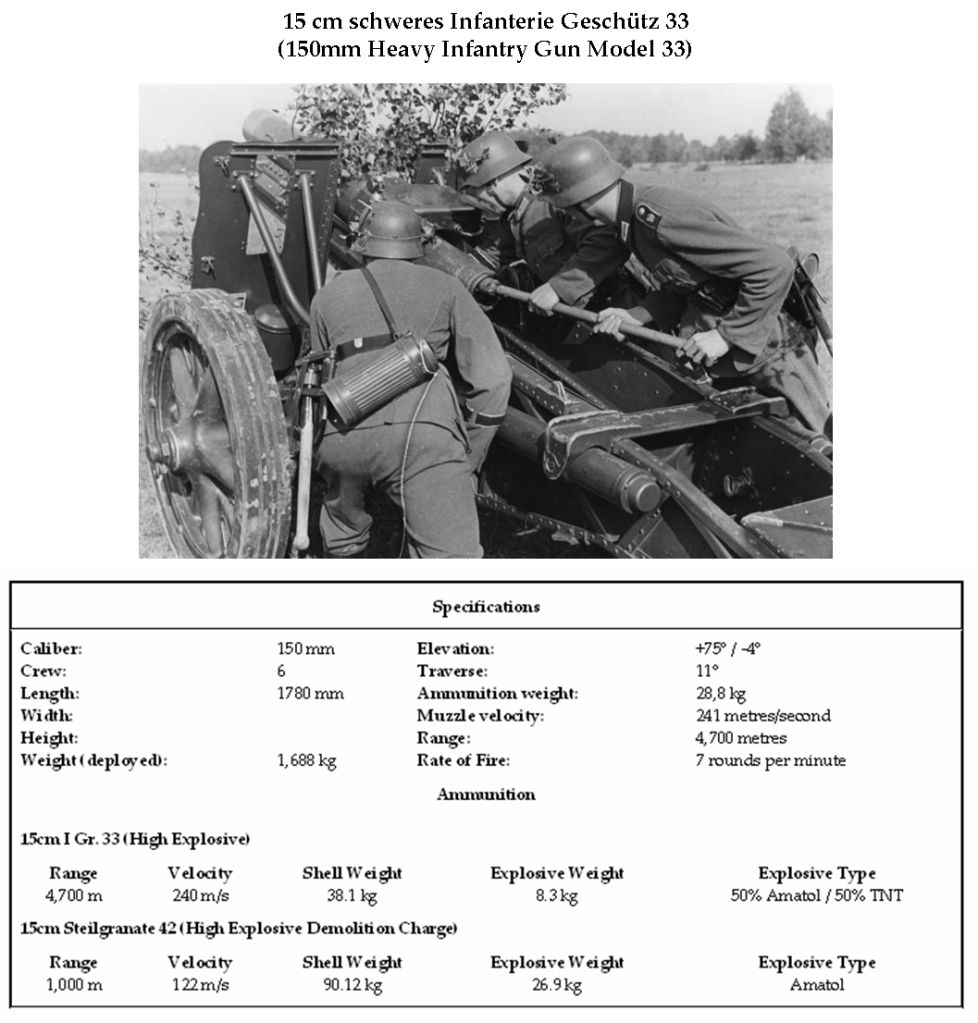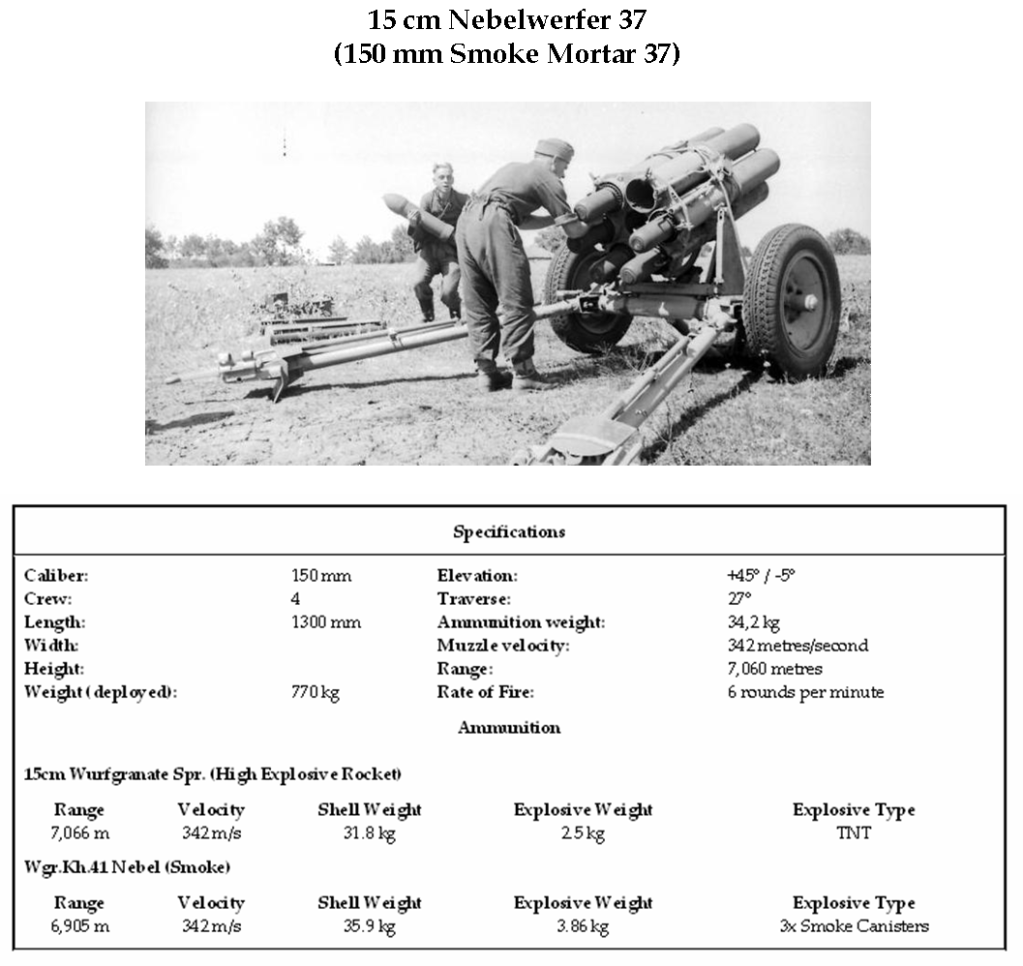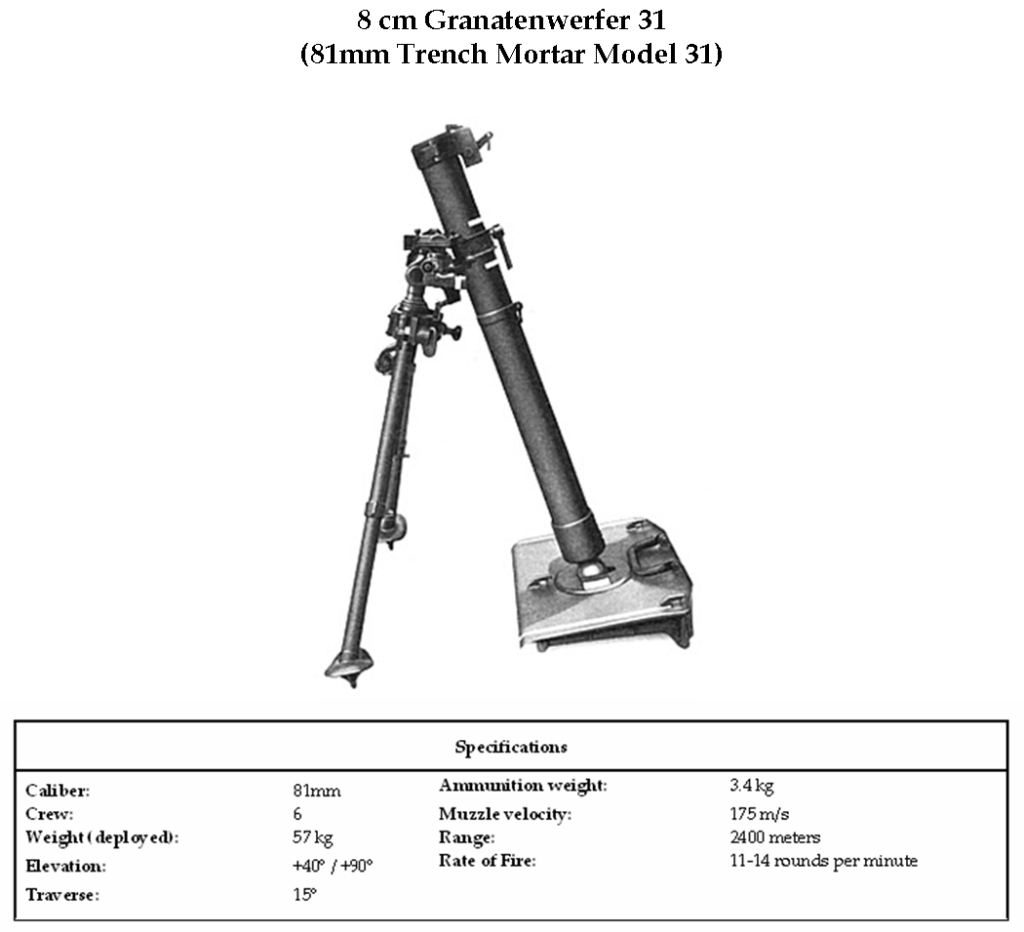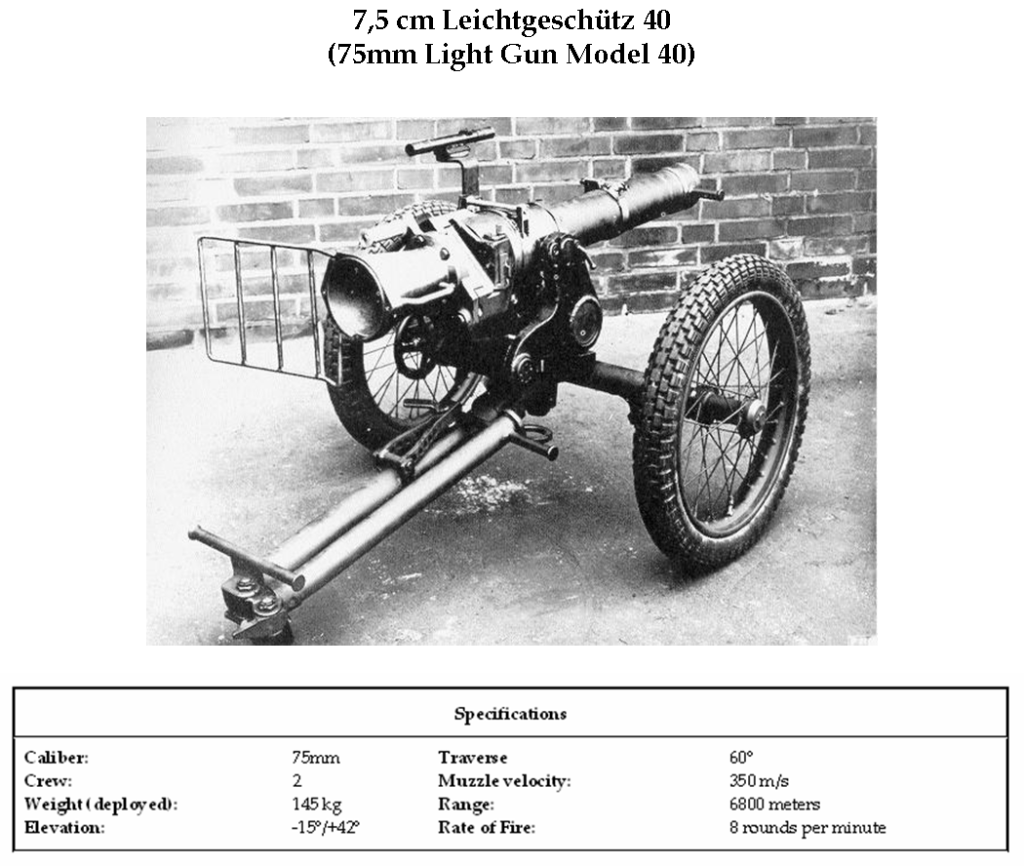German Army Artillery - 1934
The Heer puts a premium on its support weapons, which (in 1934) includes the mortars, infantry guns, and machineguns of the infantry and the artillery that supports the infantry. Each infantry division includes an organic artillery regiment, and additional independent regiments are attached at corps level. Infantry battalions include infantry guns and mortars as organic direct and indirect fire support weapons, and infantry regiments include additional infantry guns and mortars in support of the infantry.
Tube Artillery
Tube artillery is the primary weapon of the Heer's artillery branch, as both infantry guns and mortars are classed as infantry weapons. Some work is being done on the use of rockets instead of conventional cannon, but as of 1934 no such weapons have been issued.
In 1934, the basic weapon of the Heer artillery is the 105mm howitzer. This weapon is used by the organic artillery regiments and some of the independent artillery regiments. The current 105mm howitzer can fire a 14.81 kg projectile to a maximum range of 10671 meters. The weapon, with its shield, weighs just over 1.5 metric tons.
The basic heavy weapon of the Heer artillery is the 150mm howitzer. This weapon is used by the organic artillery regiments and many of the independent artillery regiments. The current 150mm howitzer can fire a 43.5 kg projectile to a maximum range of 13325 meters. The weapon, with its shield, weighs almost 5.5 metric tons.
The largest howitzer in the Heer arsenal is the 210mm howitzer. This weapon is used only by independent artillery regiments. The current 210mm howitzer can fire a 113 kg projectile to a maximum range of 16750 meters. The weapon (which does not have a shield), weighs over 16.5 metric tons
The smallest howitzer in front-line service with the Heer is the 75mm mountain howitzer. Smaller and lighter than the 105mm weapons, the 75mm howitzer can be broken down into multiple loads for easier movement in mountain terrain by mule or manpower. The current 75mm mountain howitzer can fire a 5.75 kg projectile to a range of 9150 meters, and weighs (fully assembled) 750 kg.
The backbone of the Heer's long-range artillery is the 150mm field gun. This weapon is used only by independent artillery regiments. The current 150mm field gun can fire a 43.5 kg projectile to a maximum range of 24825 meters. The weapon (which does not have a shield), weighs almost 12.5 metric tons
The largest guns currently in the Heer's inventory are the 350mm Langer Max guns, currently being remounted onto railroad carriages to improve their mobility. The 12 guns of this size (another 6 are on order) are issued to 2 independent heavy artillery regiments. The 350mm gun fires a 700 kg shell to a maximum range of 37,325 meters. The weapon and its railway carriage weigh approximately 218 metric tons and rides on a 12-bogie carriage.
Mortars
In the Heer, mortars of the Stokes/Brandt type have replaced the older minenwerfers of the Great War period, being much smaller and more portable. These weapons are assigned to the infantry and are integral parts of infantry companies, battalions, and regiments, providing the infantry commander with quick indirect fire support when and where he needs it.
In 1934, the light mortar used by the infantry companies is a 50mm mortar. It fires a 0.9 kg projectile out to a maximum range of 520 meters, and weighs 14 kg.
The medium mortar used by the infantry battalion is an 81mm mortar. It fires a 3.4 kg projectile out to 2400 meters, and weighs 57 kg.
The heavy mortar, or smoke thrower, is used by the infantry regiments and is a 105mm mortar. It's primary role is as a smoke or chemical mortar, but an HE round is provided in addition. It fires an 8.7 kg projectile out to a maximum range of 3000 meters, and weighs 93 kg.
The 200mm spigot mortar is strictly an engineer weapon, intended for use against minefields, wire, antitank obstacles, and weapon emplacements. It fires 22 kg projectiles out to a maximum range of 720 meters, and weighs 93 kg.
Infantry Guns
The Heer's infantry guns are designed to provide primarily direct-fire HE support to the infantry, though they have indirect fire capability if tied in to an artillery fire direction center.
The 75mm infantry gun is the Heer's light infantry gun, issued to the infantry battalions. A very short-barrelled weapon, it trades range for light weight and handiness. It fires a 6 kg projectile to a maximum range of 3375 meters, and weighs 400 kg with its shield.
The 150mm infantry gun is the Heer's heavy infantry gun, issued to the infantry regiments. The 150mm infantry gun, like the 75mm infantry gun, trades range for lighter weight, weighing "only" around 1.7 metric tons with its shield. It fires a 28.8 kg projectile to a maximum range of 4698 meters.
